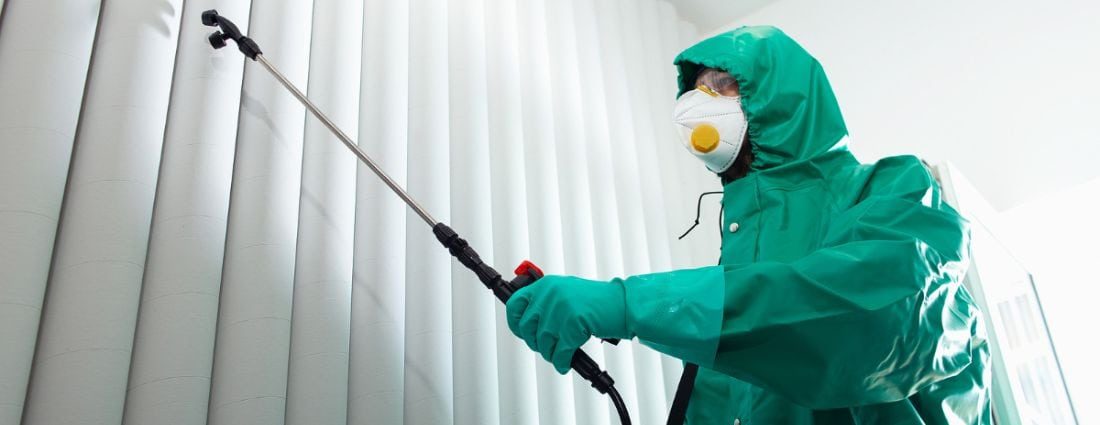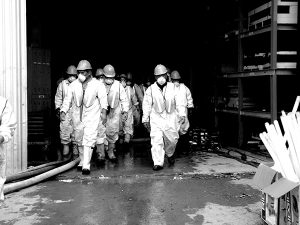Clandestine Lab Cleanup: Comprehensive Purification for Hazardous Sites
Clandestine Lab Cleanup: Comprehensive Purification for Hazardous Sites
Blog Article
Expert Biohazard Cleansing and Purification for Blood, Bodily Fluids, and Hazardous Products
The possible health dangers associated with exposure to biohazards emphasize the crucial demand for precise handling and thorough clean-up. As we navigate the elaborate landscape of biohazard clean-up, comprehending the nuances of guidelines, compliance, and the specific tools at play becomes vital in guaranteeing a risk-free and comprehensive purification process.
Health Risks of Biohazard Direct Exposure
Exposure to biohazards positions substantial health and wellness risks that can cause severe consequences for individuals and communities alike. Biohazards encompass a wide range of biological substances, including blood, bodily fluids, mold and mildew, bacteria, infections, and various other possibly transmittable products. When people enter into contact with these biohazards, whether through accidents, incorrect handling, or environmental exposure, they face the risk of contracting major health problems or illness.
Among the primary health risks connected with biohazard direct exposure is the transmission of contagious illness. Bloodborne microorganisms such as HIV, liver disease B and C, and numerous microorganisms can be existing in biohazardous products, posing a direct danger to human health and wellness. Breathing in air-borne biohazards like mold and mildew spores or coming right into call with polluted surfaces can also lead to respiratory concerns, allergic reactions, and other adverse health effects.
Moreover, biohazard direct exposure can have long-lasting wellness implications, with some conditions manifesting years after the preliminary get in touch with (Blood Cleanup). As a result, it is essential to focus on appropriate biohazard cleaning and purification to minimize these health and wellness risks and ensure the security of communities and individuals

Specialized Training for Biohazard Clean-up
When it comes to managing biohazard cleaning efficiently and safely, specialized training plays an essential duty in guaranteeing appropriate purification treatments are followed. Biohazard cleanup needs certain expertise and abilities to effectively reduce threats connected with bloodborne pathogens, bodily fluids, and harmful products. Specialists educated in biohazard cleaning undergo rigorous direction on exactly how to securely take care of, remove, and deal with biohazardous materials to stop contamination and direct exposure.
Specialized training for biohazard cleaning covers a variety of important topics, consisting of correct individual safety equipment (PPE) usage, bloodborne pathogen recognition, decontamination techniques, and contaminated materials disposal protocols. People educated in biohazard cleanup are geared up with the required competence to assess contamination degrees, recognize potential dangers, and implement suitable cleaning procedures in compliance with governing standards.
Continual training and education are paramount in the field of biohazard cleaning to remain upgraded on the most up to date purification modern technologies, security procedures, and policies. By purchasing specialized training, biohazard clean-up experts can efficiently reply to emergency clean-up situations and secure both public health and wellness and the environment.
Value of Proper Decontamination Methods
Using proper decontamination techniques is crucial in biohazard cleanup to efficiently remove harmful materials and decrease wellness threats. Efficient decontamination not just makes certain the elimination of noticeable traces of blood, bodily liquids, and other biohazards but also targets invisible pathogens that may present serious wellness dangers if not properly eliminated. By adhering to stringent decontamination methods, educated experts can substantially decrease the discover this risk of direct exposure to harmful bacteria, infections, and microorganisms that could result in diseases or infections.
Appropriate decontamination methods include using specific devices and anti-bacterials that are particularly created to neutralize biohazards effectively. Detailed cleaning and sanitation of contaminated areas are vital to prevent the spread of pathogens and guarantee a risk-free setting for owners. In addition, the correct disposal of biohazardous waste following decontamination treatments is vital in avoiding contamination of other surface areas or people.

Equipment and Devices for Safe Cleaning
When dealing with blood, bodily liquids, or dangerous products, biohazard cleaning specialists rely on specialized gear to minimize direct exposure threats and completely sanitize the affected location. In addition, biohazard cleaning sets including disinfectants, absorbent products, and biohazard bags are made use of to safely consist of and dispose of polluted things.
Advanced cleaning tools like hospital-grade anti-bacterials, HEPA-filtered vacuums, and fogging equipments are used to sterilize surfaces and visit this site right here eliminate biohazards effectively. Specialized equipment such as sharps containers and biohazard waste disposal bins are used to securely take care of sharp things and biohazardous waste products. By making use of the right equipment and tools, biohazard cleaning professionals can guarantee a detailed cleaning procedure that focuses on safety and security and decreases health risks for both workers and occupants of the affected space.
Rules and Conformity in Biohazard Cleansing
Correct adherence to laws and conformity requirements is vital in biohazard cleansing to make sure the security of both workers and the environment. Government agencies such as OSHA (Occupational Safety And Security and Wellness Management) and the EPA (Epa) have established details standards for biohazard clean-up treatments to lessen health and wellness risks and environmental contamination. These laws cover a series of elements including the handling, transport, and disposal of biohazardous products, in addition visit to the necessary training and safety devices required for personnel associated with the clean-up process.
Biohazard cleaning companies have to stay up-to-date with these laws to ensure that their operations fulfill the needed safety criteria. Failure to abide by these guidelines can result in extreme repercussions, consisting of fines, legal activity, and endangering the wellness of individuals and the setting. By following rigorous policies and conformity procedures, biohazard cleansing business can effectively alleviate risks and make certain a complete and safe cleaning process for all celebrations entailed.
Final Thought
To conclude, biohazard cleaning and purification call for specialized training, correct techniques, and adherence to policies. Direct exposure to blood, bodily fluids, and unsafe materials poses substantial health and wellness dangers, making it essential to utilize the right equipment and devices for safe clean-up. By adhering to rigorous protocols and guidelines, specialists can effectively reduce the risks linked with biohazard direct exposure and ensure the safety of both themselves and others.
As we navigate the complex landscape of biohazard cleaning, recognizing the subtleties of regulations, compliance, and the specialized devices at play ends up being essential in guaranteeing a risk-free and complete purification procedure. (Blood Cleanup)
When it comes to handling biohazard cleanup efficiently and securely, specialized training plays a basic duty in making certain correct purification treatments are adhered to.Making use of appropriate decontamination methods is important in biohazard clean-up to efficiently decrease and remove harmful materials health risks. In addition, biohazard cleansing sets including anti-bacterials, absorbing products, and biohazard bags are used to safely have and get rid of of polluted products.
Government agencies such as OSHA (Occupational Safety And Security and Wellness Management) and the EPA (Environmental Security Agency) have actually developed certain guidelines for biohazard cleanup treatments to lessen health and wellness risks and ecological contamination.
Report this page